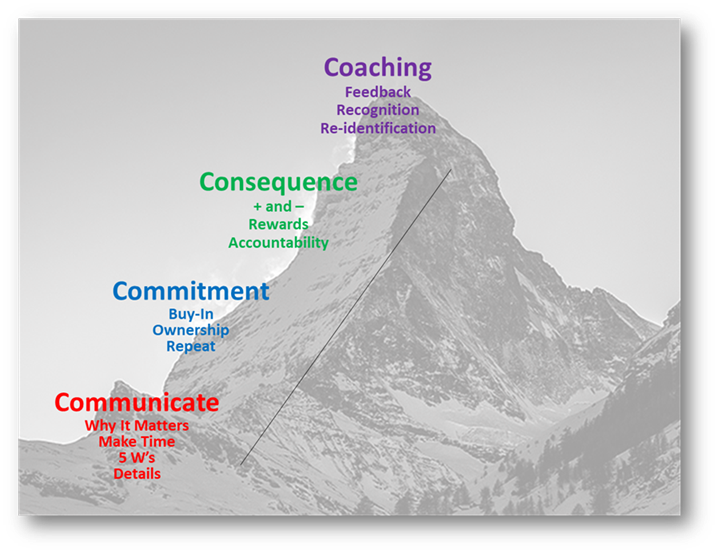In any organization, employee engagement is one of the keys to productivity and efficiency. The cost of disengagement is high, often leading to decreased productivity, increased turnover, and reduced profitability. To combat these challenges, it’s essential for leaders to have a clear understanding of human motivation in theory and practice, and to effectively engage their workforce using various tools and techniques.
In this blog, we will discuss the importance of employee engagement and three specific tools that leaders can use to foster engagement and inspiration.
What is Employee Engagement?
Employee engagement is not the same as job satisfaction or happiness – individuals can be satisfied with their jobs but remain disengaged. John Smythe from The Chief Engagement Officer defined employee engagement as the extent to which people are personally involved in the success of a business. Gallup defines employee engagement as the involvement and enthusiasm of employees in their work and workplace.
Tools for Fostering Employee Engagement and Inspiration
Let’s delve into three specific tools that leaders can utilize to foster employee engagement and inspiration among their team members. These tools can help create a positive work environment and encourage employees to perform at their best.
Tool #1: Building Trust
Trust is the bedrock of any successful relationship, and the relationship between a leader and their team is no exception. Leaders leave a lasting impact or ‘wake’, shaped by their actions and decisions, much like the trail left behind by a boat moving through water.
This wake influences both the results achieved, and the relationships formed within a team. Building trust involves assessing one’s own actions, understanding their short and long-term impacts, and ensuring that these actions inspire confidence and hope rather than breeding resentment or distrust. Stephen M. R. Covey’s diagram below explains the important elements in building trust, making it easier to understand the steps to creating and maintaining trust.

Here are some tips for building trust:
- Reflect on the wake you’re leaving behind. Every interaction matters.
- Build credibility through demonstrating your character and competence.
- Understand the risks and opportunities involved in any given situation.
Tool #2: Engaging in Two-Way Feedback
Feedback is a vital element of effective leadership. Constructive, focused, and fact-based feedback can significantly improve an employee’s performance. A whopping 72% of employees believe that their performance would improve with actionable feedback. However, giving feedback is an art. For positive feedback, make it specific, connect it to the impact, and make it part of an ongoing conversation. For negative feedback, the focus should be on the facts and behavior without assuming intent. Provide affirmation alongside critique and ask open-ended questions to confirm understanding and gain commitment on next steps.
In a virtual environment, providing feedback requires additional considerations. Connect on a human level, provide early feedback, keep it bite-sized, and avoid ‘hit and run’ feedback. As for receiving feedback, employees need to prepare themselves mentally, stay present, reflect, ask clarifying questions, thank the person, and take necessary actions. Making feedback a routine part of your organizational culture can be transformative.
Here are some tips for creating a culture of feedback:
- Make feedback specific, timely, and focused on behavior, not the person.
- Foster a culture of open communication where feedback is a routine part of operations.
- Embrace a mindset of growth and learning, both when giving and receiving feedback.
Tool #3: Delegating and Setting Expectations
Delegation is not merely assigning tasks; it is a journey up the ‘Expectation Mountain’.
Leaders need to clearly communicate the five W’s: Who, What, When, Where, and Why, along with the standards of quality and time. Gaining commitment from the team or an individual is essential, and this is where open-ended questions can be incredibly helpful. Understanding and discussing the potential consequences, both positive and negative, can also promote commitment and motivation.
Active coaching plays a significant role in the process of delegation. It involves setting up periodic check-ins or in-progress reviews (IPRs) to monitor the progress and recalibrate strategies as necessary. Coaching not only ensures the task is on track but also keeps the leader engaged without appearing to micro-manage.

Here are some tips delegating effectively and setting the right expectations:
- Clearly define tasks and set realistic expectations.
- Delegate by climbing the ‘Expectation Mountain’: communicate, gain commitment, and then coach.
- Regularly check-in and provide support and guidance as needed.
By using these three tools, leaders can create a work environment that is conducive to employee engagement and inspiration. A leader’s commitment to understanding human motivation and utilizing tools to foster trust, provide constructive feedback, and delegate effectively is the cornerstone of successful employee engagement. An engaged workforce goes beyond increased productivity and efficiency. It breeds an environment of overall growth that drives the long-term success of the organization.
However, remember that every organization and every team is unique. Leaders must adapt their approaches to fit the specific needs and characteristics of their workforce, blending different leadership styles and employee engagement strategies.
Have you ever worked in an environment where employee engagement was a primary focus? What strategies have you found most effective in building trust, giving and receiving feedback, and delegating tasks? We’re interested in your experiences, insights, and questions about employee engagement. Your stories and thoughts can inspire others and provide valuable learning for organizations seeking to improve their employee engagement strategies. Leave a comment below, send us an email, or connect with us on Twitter.

